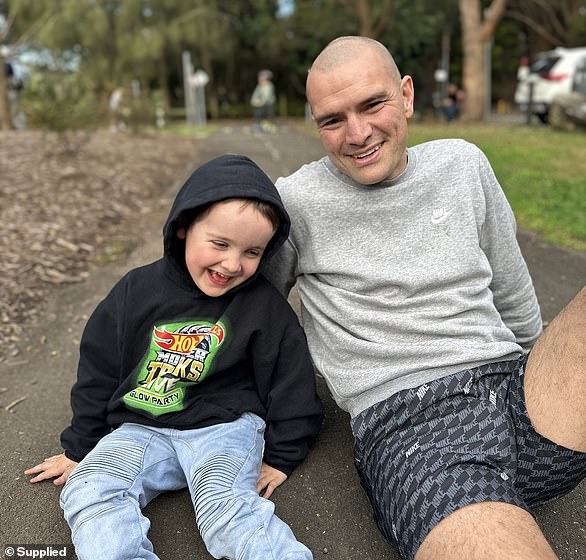We took our happy little boy George for a check-up at 18 months. Within minutes the doctor noticed a subtle detail that led to a devastating diagnosis no parent can prepare for
When Kathy and Glenn Stley saw their 18-month-old son George get up from the floor in a pediatrician’s office, they were elated.
Although the little boy could sit and stand, the Sydney couple were concerned about his gross motor skills. He had trouble transitioning between movements, so seeing him get up from the floor all by himself seemed like an achievement.
However, George had used some of his limbs to get up. This one detail immediately raised alarm bells for his doctor, who ordered urgent blood tests.
When they returned, the loving parents received news they never expected. Their son had Duchenne muscular dystrophy.
Duchenne is the biggest genetic killer of boys, but although the genetic condition affects one in 5,000 male births, it is largely unknown. There is no cure.
For Cathy, this news was the first time she had heard about the genetic condition.
“I knew from my gut that something was wrong, but I didn’t think it would be this,” Cathy told Daily Mail Australia.
“Now it’s the first thing I think about in the morning and it’s the last thing I think about at night, but I’d never heard of it at the time.”
At just 18 months old, George Stalley was diagnosed with Duchenne muscular dystrophy
An apparently normal baby
Cathy says that prior to George’s diagnosis, there had been no real red flags regarding his health.
‘George was a seemingly normal baby. In some areas he was a little behind in his gross motor skills. But then he seemed to be in the lead, he was one of the first to be in my mother’s group.’
‘He couldn’t go from lying down to sitting and later, although he could stand, he couldn’t get from sitting to standing up. He seemed to be having trouble with the transitions,” Cathy said.
‘We weren’t worried. The GP wasn’t concerned, George was meeting all his milestones.’
But when George was eight months old, Cathy decided to call in a private physiotherapist for a few sessions with her son, but nothing was discovered at that time.
By the time George turned one, the mother-of-two wanted specialist help, but initially doctors weren’t concerned.
‘At the check-up after twelve months I said that I would like to see a paediatrician, but the GP sent me away. Two weeks later I went back and demanded the referral. Once again we weren’t worried, I just wanted reassurance.’
It took another six months before the diagnosis was made by the pediatrician. George was 18 months old.
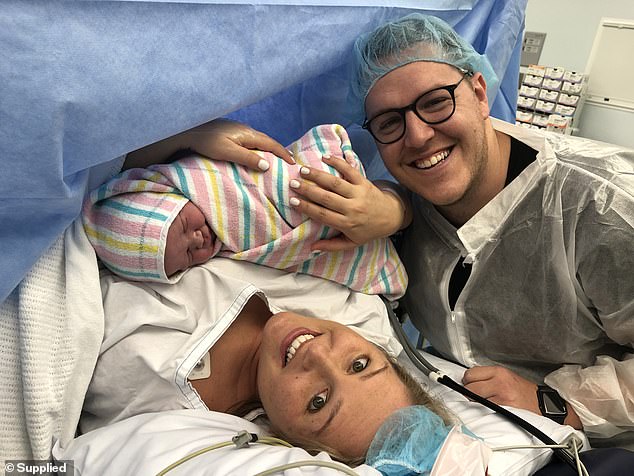
Cathy and her husband Glenn welcomed baby George five years ago and say he was a ‘seemingly normal baby’ before shock diagnosis
After learning about her son’s diagnosis, Kathy did what most people in her position would do. ‘I googled it and the first thing you read is that 16 is the life expectancy, but in reality it’s late 20s now.’
Duchenne is a degenerative condition in which a person with the condition experiences progressive muscle damage and loss of muscle function and strength.
This muscle damage is caused by a deficiency of dystrophin, a protein that occurs in muscle cells and functions as a shock absorber for the muscles.
Because those who have Duchenne cannot rebuild this protein as other people can, it leads to progressive damage to muscles throughout the body, including vital organs.
What life is like now
George is now five years old and will go to school next year. The family has moved into their forever home, which they are renovating to ensure it is suitable as George’s condition progresses.
‘For anyone who doesn’t know, he is a happy and healthy boy, but physically he is slower than his peers. He finds it difficult to get up and down from the floor.’
‘Because it’s a degenerative disease, I definitely feel it more now. “I’m aware that every movement he makes affects his body and we have a lot of physiotherapy and hydrotherapy and George has to wear these horrible night splints to bed,” Cathy said.
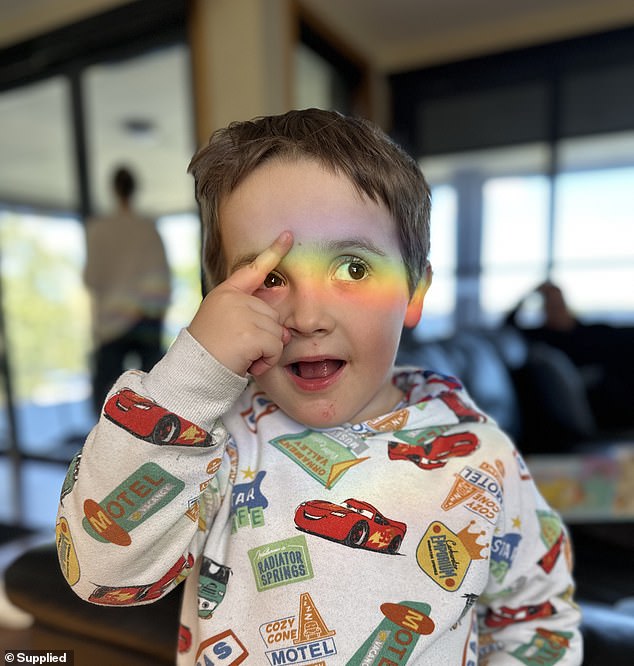
“To anyone who doesn’t know, he is a happy and healthy little boy, but he is physically slower than his peers,” Cathy said
George, who has recently been diagnosed with ADHD, attends preschool two days a week but also undergoes regular speech therapy and psychology before starting school. He is also about to get his first wheelchair,
‘I think the wheelchair will help him. To many his condition is invisible, but this will nip it in the bud and it will be obvious.”
Despite the enormous hurdles the family has overcome and despite the obstacles they now face, Cathy remains positive.
“It’s not the life I thought I would have, but I’m grateful for everything we have,” she said.
‘Drugs are our only hope’
A big focus for the family is trying to raise awareness of the condition and the family are heavily involved with the charity Duchenne Australia and Glenn serves on the charity’s board.
The volunteer-run charity supports families receiving a Duchenne diagnosis in a number of ways, connecting families affected by the condition across Australia.
As Cathy knows firsthand, receiving a Duchenne diagnosis can turn your life upside down.
“It’s hard to talk to newly diagnosed families, but I always say to spend time grieving the thought of the life you thought you would have for your son. There is still a life you can live,” she said.
As there is no cure for the condition, the charity is contacting pharmaceutical companies looking for clinical trials that may be available in Australia.
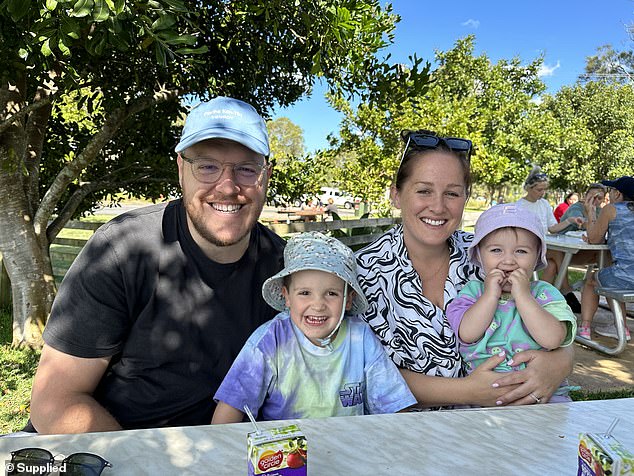
Cathy with husband Glenn, son George, five, and their daughter
“It’s difficult because of our geography, pharmaceutical companies don’t want to bring trials to Australia. Medicines are our only hope and our main priority is gene therapy.”
“We don’t talk about healing in our community, but hopefully gene therapy will buy us time, which in turn will give us hope.”
“We have the saying ‘time is muscle’ because every day I know George is doing damage to his heat and his lungs.”
The charity recognizes the benefits of early detection of the condition and although there are currently 350 on the Australian Duchenne Neuromuscular Disease Registry, Cathy says the charity believes this number could be much higher.
‘The condition affects one in 5,000 male births.’
At the time George was diagnosed, Cathy was only nine weeks pregnant with her second child and although the condition mainly affects men, she did not know the gender of her unborn child at the time, adding to the stress in a already a difficult time in her life. to live.
‘I was pregnant with my daughter at the time, but I didn’t know her gender. Although girls can carry the disease, the disease is not as severe as in boys. We are pushing for more genetic testing for the condition, which is incredibly important.”
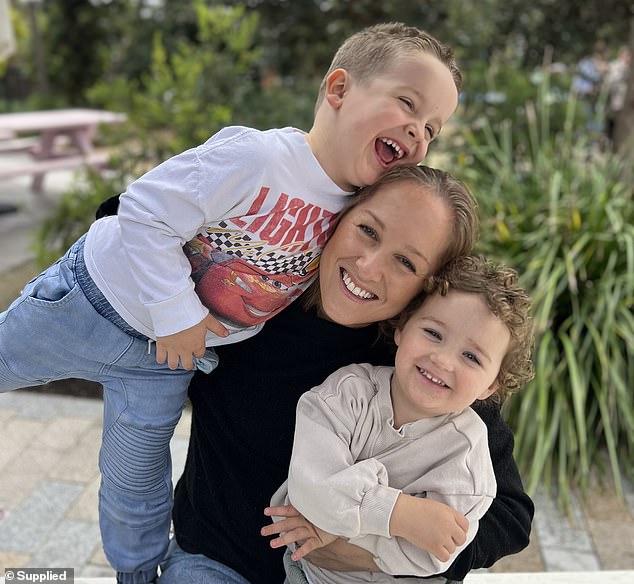
George will start school next year and will remain in regular education for as long as he can
What next for George
‘George is very social and that is why we are happy that he is going to school.’ Cathy shared.
The family wanted George to attend a public school and his local school in Ryde, Sydney, will be making changes to ensure it is wheelchair friendly from next year.
‘We want him to go to a regular school. We want him to live as normal a life as possible and we are going to hold him to the same expectations as everyone else.”
‘I’m so happy that George is with us. We just want to give him a really great life.”
Visit for more information Duchenne Australia.

